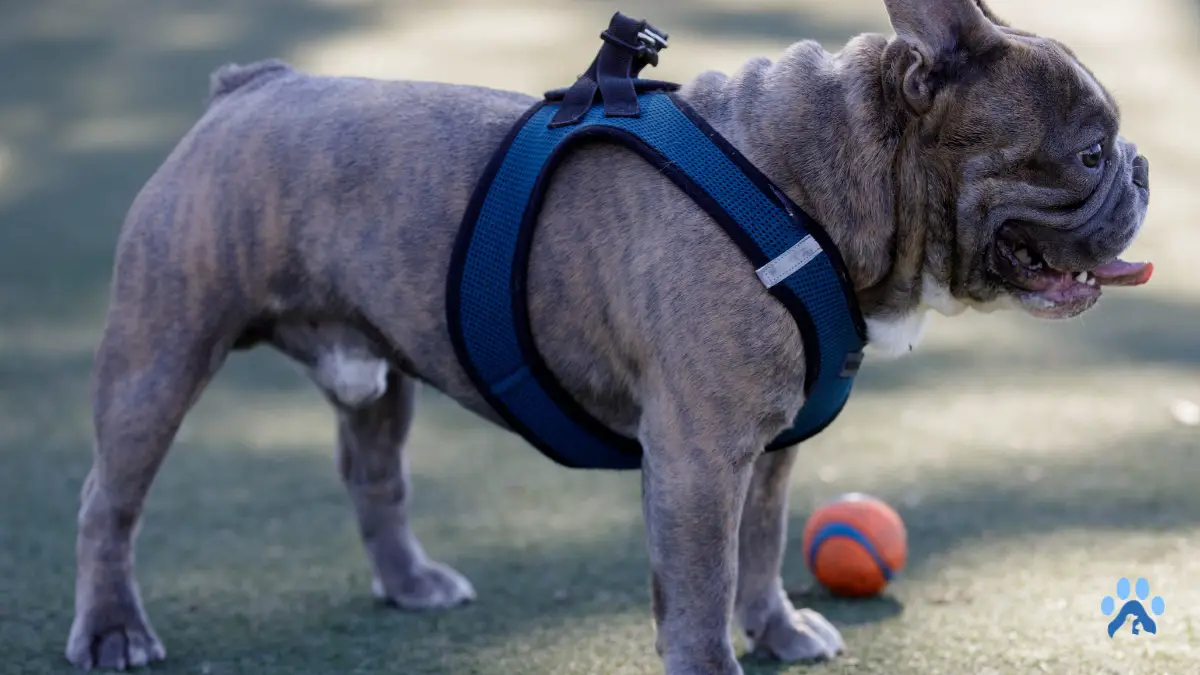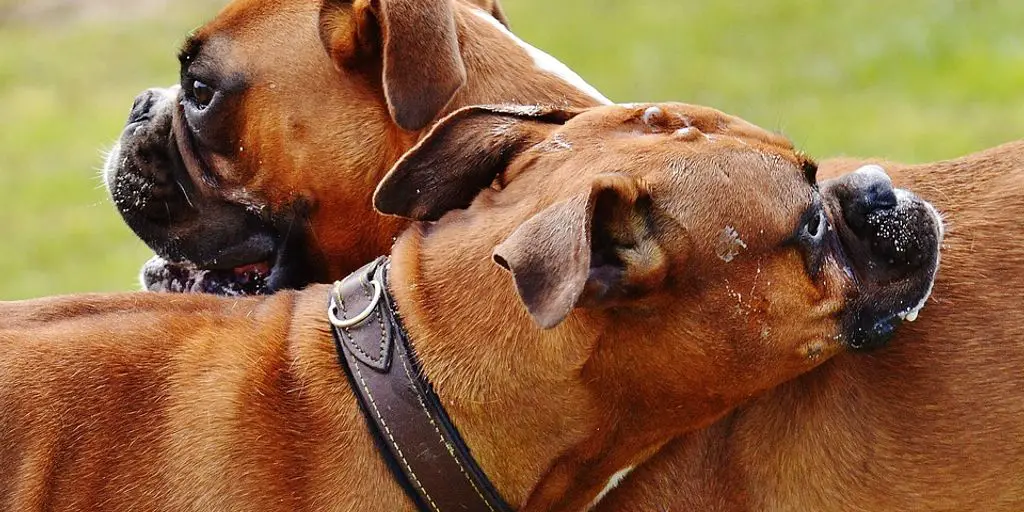Training your dog to wear a harness is an essential part of keeping them safe and secure while out on walks or adventures. It can be a challenging process, especially if your dog is not used to wearing one. However, with patience, consistency, and the right techniques, you can train your dog to wear a harness comfortably and confidently.
Before you start training your dog to wear a harness, it’s essential to choose the right type of harness for your dog’s size, breed, and temperament. There are various types of harnesses available, including back-clip, front-clip, and step-in harnesses. Each type has its advantages and disadvantages, so it’s crucial to do your research and choose the one that’s best suited for your dog’s needs.
Once you have chosen the right harness, it’s time to start training your dog to wear it. The key to successful harness training is to take it slow and gradually introduce your dog to the harness. Start by letting your dog sniff and investigate the harness, then reward them with treats and praise for positive behavior. With patience and consistency, your dog will soon learn to associate the harness with positive experiences and be comfortable wearing it.
Why Use a Harness?
If you’re wondering why you should use a harness instead of a collar for your dog, there are several benefits to consider. Harnesses are designed to fit around your dog’s chest and torso, rather than their neck, which can provide a more comfortable and secure fit. Here are some of the benefits of using a harness:
Benefits of Using a Harness
Comfort
Harnesses are typically more comfortable for dogs than collars because they distribute pressure more evenly across the chest and torso, rather than concentrating it on the neck. This can be especially important for dogs with respiratory issues or neck injuries.
Safety
A properly fitted harness can also be safer than a collar because it reduces the risk of your dog slipping out of its collar or choking itself if they pull too hard. Additionally, some harnesses, such as the martingale collar, can provide added security by tightening slightly when your dog pulls, preventing them from slipping out.
Different Types of Harnesses
There are many different types of harnesses available, each designed for a specific purpose. For example, a front-clip harness can be useful for dogs who pull on their leash because it redirects their attention toward you when they pull. A back-clip harness, on the other hand, is better suited for dogs who are already well-behaved on a leash.
Positive Association
Introducing your dog to a harness can be a positive experience if you use positive reinforcement techniques. By associating the harness with treats, praise, and other rewards, you can help your dog learn to enjoy wearing it.
Adjusting to the Harness
When introducing your dog to a harness, it’s important to take things slow and allow them to adjust at their own pace. Start by letting them sniff and investigate the harness before putting it on them. Once they’re comfortable with the harness, try putting it on them for short periods of time, gradually increasing the length of time they wear it.
Pullers
If your dog is a puller, a harness can be a useful tool for training them to walk on a leash without pulling. By using a front-clip harness, you can redirect their attention towards you when they pull, making it easier to train them to walk calmly by your side.
In conclusion, using a harness can be a safe and comfortable way to walk your dog. With many different types of harnesses available, it’s important to choose one that fits your dog properly and is appropriate for their specific needs. By using positive reinforcement techniques and allowing your dog to adjust at their own pace, you can help them learn to enjoy wearing their harness and make walks a more enjoyable experience for both of you.
Types of Harnesses
When it comes to training your dog to wear a harness, it’s important to choose the right type of harness. There are several types of harnesses available on the market, each with its own unique features and benefits. Here are some of the most common types of dog harnesses:
Step-in Harness
The step-in harness is one of the easiest types of harnesses to put on your dog. It consists of two loops that go around your dog’s legs and a strap that goes around their chest. To put it on, simply have your dog step into the harness and fasten the chest strap. This type of harness is great for dogs that are new to wearing a harness or for dogs that don’t like things going over their head.
Overhead Harness
The over-head harness is another popular type of harness. It goes over your dog’s head and has a strap that goes around its chest. This type of harness is great for dogs that are more experienced with wearing a harness and for dogs that don’t mind things going over their head.
Front Clip Harness
The front clip harness is designed to discourage pulling. It has a leash attachment on the front of the harness, which helps to redirect your dog’s attention back to you when they start to pull. This type of harness is great for dogs that need leash training or for dogs that tend to pull on walks.
Standard Dog Harness
The standard dog harness is a basic harness that goes around your dog’s chest and has a leash attachment on the back. This type of harness is great for dogs that are comfortable with wearing a harness and for dogs that don’t need any special features.
Dog Mobility Harness
The dog mobility harness is designed for dogs with mobility issues. It provides support for your dog’s chest and back legs, making it easier for them to walk or climb stairs. This type of harness is great for dogs that are recovering from surgery or for dogs that have arthritis or other mobility issues.
When choosing a harness for your dog, it’s important to follow the manufacturer’s guidelines for measurement and adjusting the harness. Always use positive reinforcement when training your dog to wear a harness, and be patient as they adjust to the new sensation. With the right harness and training, your dog will be comfortable and safe on walks and during travel.
Choosing the Right Harness
When it comes to training your dog to wear a harness, choosing the right harness is crucial. There are different types of harnesses available on the market, and selecting the right one for your dog can make all the difference in their comfort and safety. Here are some things to consider when choosing the right harness for your furry friend.
Fitting the Harness
The first thing to consider when choosing a harness is the fit. A properly fitting harness should be snug but not too tight. You should be able to fit two fingers between the harness and your dog’s body. If the harness is too loose, your dog may be able to slip out of it, but if it’s too tight, it can cause discomfort and even injury.
Comfort and Padding
Another factor to consider is the comfort of the harness. A comfortable harness will ensure that your dog is happy to wear it and won’t try to escape. Look for a harness with padding in the chest and back area to prevent rubbing and chafing. A harness that is too rough or uncomfortable can make your dog hesitant to wear it.
Handle and Buckle
The handle and buckle are also important features to consider when choosing a harness. A handle on the back of the harness can make it easier to control your dog on walks and can help lift them over obstacles. A buckle that is easy to fasten and unfasten is also important, especially if you have a wiggly puppy or an older dog with arthritis.
When selecting a harness, keep in mind that different types of harnesses work better for different dogs. For example, a step-in harness is easier to put on, but an overhead harness may be more secure for dogs that tend to pull. It’s also important to choose a harness that is appropriate for your dog’s size and weight.
Training with Treats and Praise
Once you have chosen the right harness for your dog, it’s time to start training them to wear it. Start by introducing the harness to your dog and allowing them to sniff and investigate it. Then, gradually begin to put the harness on and take it off, rewarding your dog with treats and praise for good behavior.
It’s essential to take your time with this process and not rush your dog. If they seem uncomfortable or hesitant, take a step back and try again later. With patience and persistence, your dog will learn to love their harness and be ready for walks in no time.
Training Your Dog to Wear a Harness
Training your dog to wear a harness is an important step in ensuring their safety and comfort during walks and travel. Here are some guidelines to help you train your dog to wear a harness:
Positive Reinforcement
Positive reinforcement is key to training your dog to wear a harness. Use treats, praise, and a positive tone of voice to encourage your dog to wear the harness. Start by letting your dog sniff and explore the harness, and reward them with treats and praise when they show interest in it. Gradually introduce the harness by putting it on for short periods of time and rewarding your dog for wearing it.
Leash Training
Once your dog is comfortable wearing the harness, it’s time to introduce the leash. Start by attaching the leash to the saddle and letting your dog drag it behind them. This will help them get used to the feeling of the leash and the added pressure of being attached to it. When your dog is comfortable with the leash, start practicing walking with them on a leash.
Adjusting to the Harness
It’s important to make sure the harness fits properly and is comfortable for your dog. Measure your dog’s chest and choose a harness that fits snugly but not too tightly. A step-in harness or an overhead harness may be easier for some dogs to adjust to. Make sure the harness is properly padded and has chest straps that distribute pressure evenly across your dog’s chest.
Dealing with Distractions
When training your dog to wear a harness, it’s important to be patient and consistent. Use cues and positive reinforcement to help your dog stay focused and calm. If your dog becomes distracted or starts pulling, stop and wait for them to calm down before continuing. Practice walking in different environments and with different distractions to help your dog adjust to wearing the harness.
Different types of harnesses, such as the front clip harness or the dog mobility harness, may be more suitable for different dogs based on their size, age, and mobility. As a pet parent, it’s important to choose the right harness for your dog and to follow the manufacturer’s guidelines for fitting and use.
Overall, training your dog to wear a harness can provide many benefits, such as increased safety, comfort, and control during walks and travel. With patience, consistency, and positive reinforcement, you can help your dog adjust to wearing a harness and enjoy the benefits of comfortable and safe walks.
Frequently Asked Questions
How do I get my dog used to wearing a harness?
Getting your dog used to wearing a harness can take time and patience. Start by introducing the harness gradually. Let your dog sniff and explore the harness before putting it on. Once your dog is comfortable with the harness, put it on for short periods of time, gradually increasing the duration. Reward your dog with treats and praise when they wear the harness without fussing.
What are some tips for putting a harness on a puppy?
When putting a harness on a puppy, choose a harness that fits properly and is comfortable. Start by letting your puppy sniff and explore the harness. Then, put the harness on for short periods of time, gradually increasing the duration. Reward your puppy with treats and praise when they wear the harness without fussing.
How can I train my dog to stop biting when putting on a harness?
If your dog bites when putting on a harness, it may be a sign of fear or anxiety. Start by desensitizing your dog to the harness by letting them sniff and explore it. Then, slowly introduce the harness, rewarding your dog with treats and praise when they remain calm. If necessary, seek the help of a professional dog trainer.
What are some effective no-pull dog training harnesses?
No-pull dog training harnesses can be effective in preventing pulling on walks. Some popular options include the Easy Walk Harness, the Freedom No-Pull Harness, and the Halti Harness. It’s important to choose a harness that fits properly and is comfortable for your dog.
How can I desensitize my dog to wearing a harness?
Desensitizing your dog to wear a harness involves gradually introducing the harness and rewarding your dog for wearing it calmly. Start by letting your dog sniff and explore the harness. Then, put the harness on for short periods of time, gradually increasing the duration. Reward your dog with treats and praise when they wear the harness without fussing.
Is it more effective to train a dog with a harness or collar?
Both harnesses and collars can be effective training tools, depending on your dog’s needs and behavior. Harnesses can be useful for preventing pulling and for dogs with respiratory issues. Collars can be useful for training commands and for dogs that do not pull on walks. It’s important to choose the tool that is best for your dog’s individual needs.



